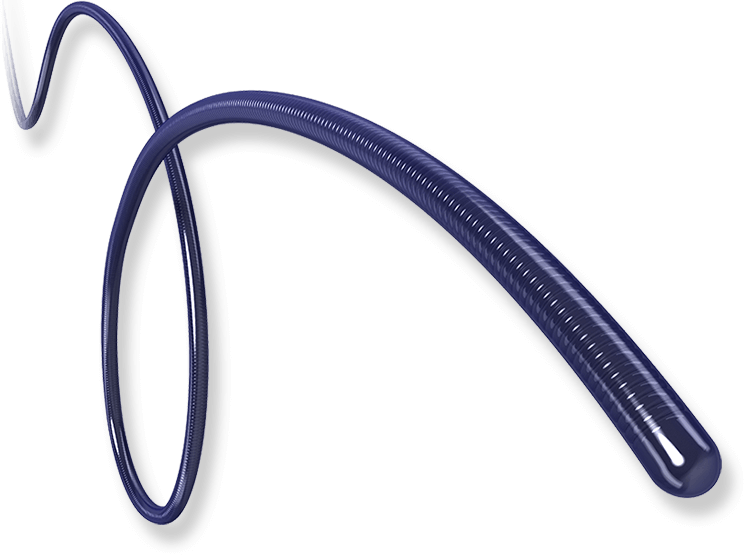Conquer Blocked Arteries: A Guide to PTCA Guidewire Types:
A minimally invasive technique called percutaneous transluminal coronary angioplasty (PTCA) is used to open up constricted coronary arteries. The PTCA guidewire, a thin, flexible wire that manoeuvres around obstructions, is an essential component of this process. However, there are several guidewire choices to match the diversity of coronary architecture. Let’s examine the three primary categories:
- Coronary Guidewires:
Available in a range of diameters and lengths, these adaptable wires are frequently composed of stainless steel or Nitinol (nickel-titanium). They can pass through the majority of coronary arteries thanks to their flexibility.
Coating Counts: Choosing Hydrophilic or Non-Hydrophilic
Hydrophilic-Coated Guidewires:
The wire surface becomes slick due to a hydrophilic coating, which facilitates the wire’s travel through tortuous (tight or twisting) lesions.
- Non-Hydrophilic Guidewires:
These uncoated wires are perfect for breaking through more calcified or stiff blocks because of their exceptional torque and kink resistance.
- Peripheral Guidewires:
Peripheral artery blockages (legs, arms) can be treated using PTCA treatments, whereas coronary guidewires concentrate on the heart. It is designed for rough terrain these wires, which have more support and rigidity, can pass through lengthy or fully clogged peripheral arteries.
Selecting the appropriate PTCA guidewire is essential to a smooth treatment. Physicians may better handle arterial difficulties and ensure a smoother route to improved heart health by studying their features. Explore our materials on Coronary Guidewires: and Peripheral Guidewires: on our website for a deeper dive into certain of these guidewire types.
Key Guidewire Characteristics for Optimal PTCA:
A crucial yet delicate instrument is used in percutaneous transluminal coronary angioplasty (PTCA): the guidewire. Slender as a spaghetti strand, these wires thread across clogged arteries to enable balloon angioplasty. However, this seemingly straightforward application has a wealth of important features that enhance PTCA processes. Let’s examine the main characteristics of guidewires that make them such effective partners in the battle against coronary artery disease:
- Tip Shape and Flexibility:
Guidewire tips are available in a variety of forms, including straight, angled, and J-tip. These modifications aid in navigating various lesion kinds. Better mobility is provided by angled or J-tips for more intricate, curved lesions. The guidewire shaft’s flexibility is important. While stronger wires provide better control and usability through more calcified obstacles, more flexible wires are better at negotiating tight or tortuous (twisted) channels.
- Shaft Construction:
The guidewire shaft’s inner core can be either solid or coiled. While coiled cores give more flexibility, solid cores are better at pushing things. The decision is based on the unique features of the lesion. During balloon inflation, a guidewire’s capacity to twist, or torque, is essential for maneuvering around obstacles and preserving control.
- Coating:
The guidewire’s surface is coated with a hydrophilic substance that makes it slick and facilitates its transit into constricted or twisted lesions. They further lower friction and enhance navigation; certain guidewires include a polymer or PTFE (polytetrafluoroethylene) coating.
Optimizing Performance: The Right Guidewire for the Right Blockage:
Comprehending these essential guidewire attributes enables physicians to select the ideal instrument for every patient. The performance of PTCA can be greatly impacted by the proper mix of tip shape, flexibility, shaft structure, and coating. Through accurate navigation of complex artery topographies, guidewires provide enhanced blood circulation and promote heart health.
Choosing Your Weapon: Guidewire Selection Considerations for PTCA
The treatment of clogged arteries using percutaneous transluminal coronary angioplasty, or PTCA, is a war zone. The PTCA guidewire is the weapon of choice, and like any war, success depends on using it wisely. Even if these cables appear straightforward, choosing the best one necessitates carefully taking into account several factors:
- Mapping the Enemy: Lesion Characteristics:
The features of the adversary (lesion) have a major impact on the choice of guidewire. To provide better usability and support, longer lesions may need firmer wires. Wires with increased torque for greater control during balloon inflation may be beneficial for calcified lesions. Smooth travel across tortuous (twisted) passageways requires extremely flexible wires.
- Desired support and Trackability:
The appropriate degree of trackability and support is an important factor. While less flexible, stiffer wires provide better support during balloon angioplasty. On the other hand, flexible wires work well in confined spaces but could offer less stability. Taking into account the unique lesion, the physician finds a balance.
- Vessel Anatomy and Accessibility:
The target vessel’s dimensions and form are also important. Thinner guidewires may be necessary for smaller vessels to facilitate access. The choice of guidewire might also be influenced by the method (radial or femoral) used to access the clogged artery.
- Operator Preference and experience
In the end, the choice of guidewire might be influenced by the physician’s preference and level of experience with various ones.
Mastering the Microworld: PTCA Guidewire Handling and Techniques
For patients with clogged coronary arteries, percutaneous transluminal coronary angioplasty (PTCA) provides a less invasive lifeline. The PTCA guidewire, a straightforward yet effective technology, is at the center of this process. The procedure known as PTCA, depends on skillfully navigating a guidewire through clogged arteries. An overview of the essential methods for accurate PTCA guidewire management is provided below:
- Meticulous Manoeuvres:
To correctly manage lesions, guidewire progress necessitates meticulous control and steering.
- Catheter Camaraderie:
The guidewire stays in the vessel by acting as a supporting sheath within the guide catheter.
- The Art of Exchange:
Difficult obstructions can be solved by deliberately using different guidewires in wire exchanges.
When performed by highly qualified medical professionals, these procedures guarantee seamless guidewire navigation, which opens the door to effective PTCA and better patient results.
Conclusion:
A prominent supplier of medical equipment, Demax provides an extensive line of guidewires made with cutting-edge technology and unshakable quality. Explore our PTCA guidewire solutions and learn how we can enhance your interventional cardiology operations by visiting our website.
